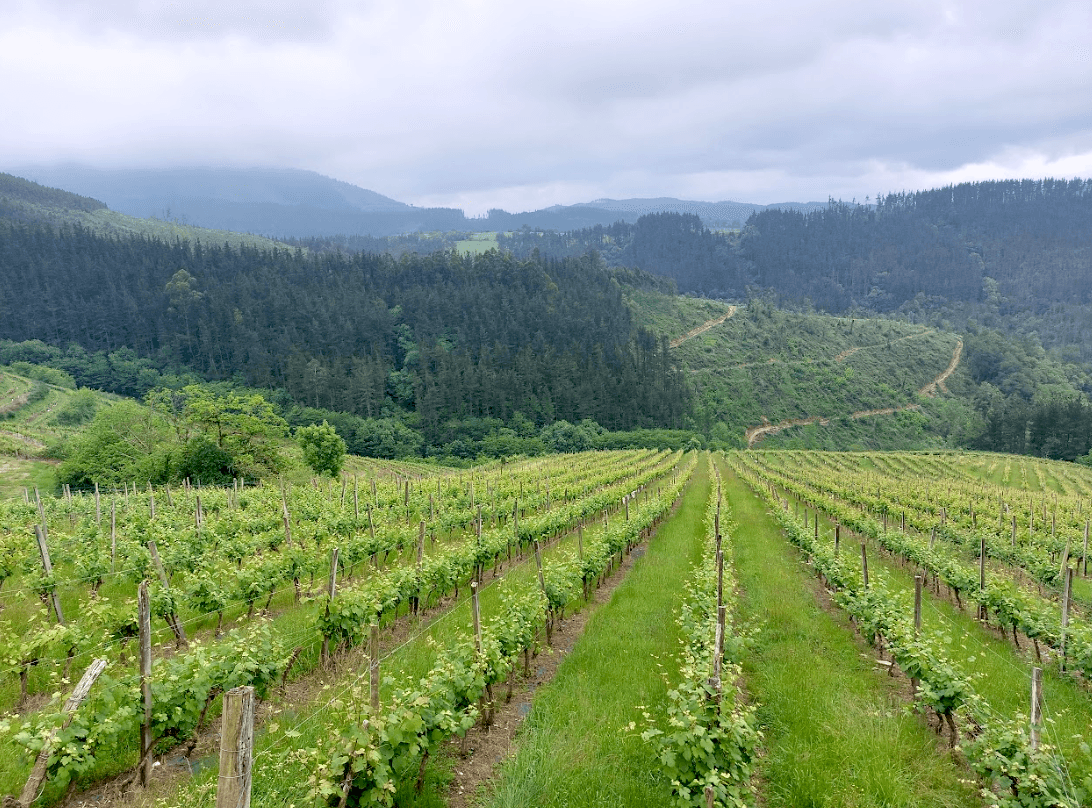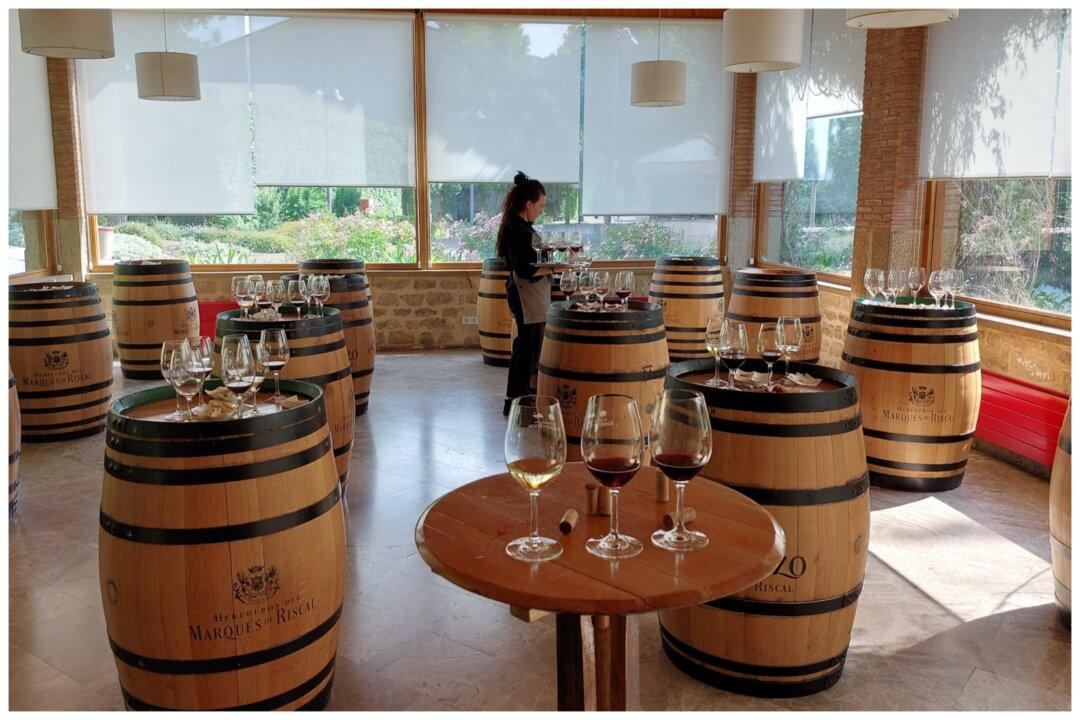“Wine, not water, with a meal,” says José Ángel Carrero, winemaker and founder of Bodega Berroja. One of our group has asked for a glass of hydration during our post-tour lunch, but house rules are house rules. A winery employee, who looks like he could be Carrero’s son but is not, follows him throughout the visit and struggles to keep up with translation. At a couple of points along the tour, he gently begs Carrero to slow down. Carrero has a background in forestry and planted the vines at this Basque farmhouse estate back in the 1990s. He’s a real salt of the earth type, lacking any pretension, exuding a Bizitzeko poza—“joy of life” in Basque. Making wine is serious business, but drinking it should be light and enjoyable. Forget the water for now.

The sloping vineyards at Bodega Berroja. Kevin Revolinski





